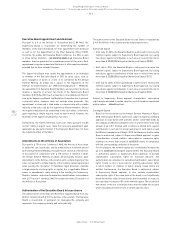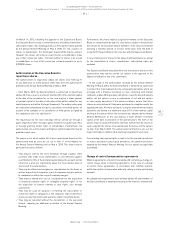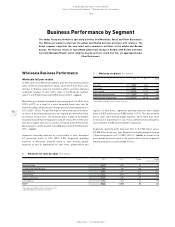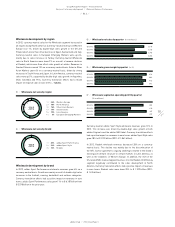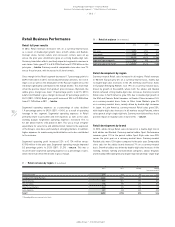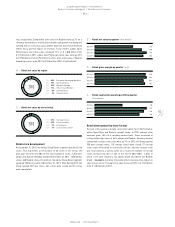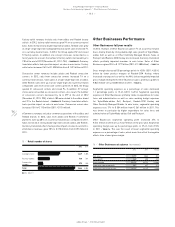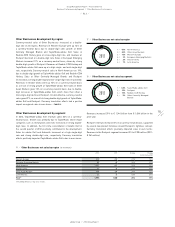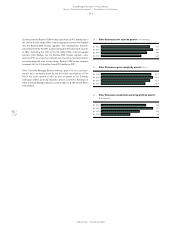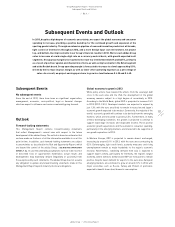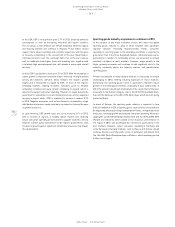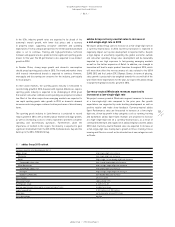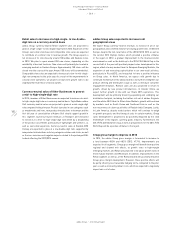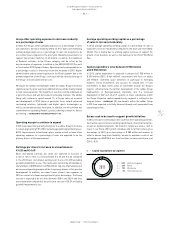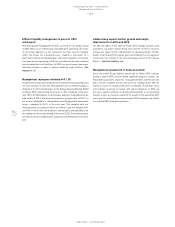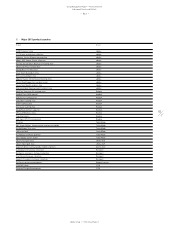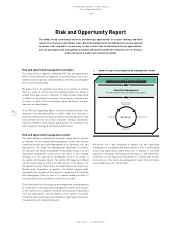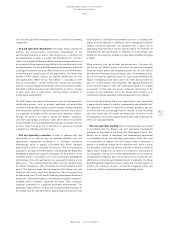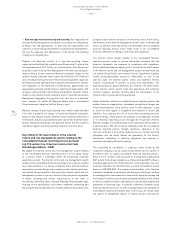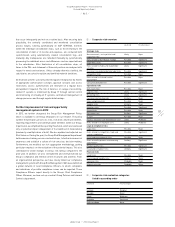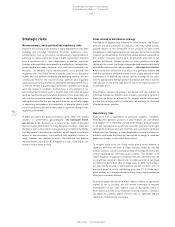Reebok 2012 Annual Report Download - page 180
Download and view the complete annual report
Please find page 180 of the 2012 Reebok annual report below. You can navigate through the pages in the report by either clicking on the pages listed below, or by using the keyword search tool below to find specific information within the annual report.
adidas Group
/
2012 Annual Report
Group Management Report – Financial Review
158
2012
Subsequent Events and Outlook
/
03.4
/
In the USA, GDP is forecasted to grow 2.7% in 2013, driven by domestic
consumption as well as increasing industrial and export activities.
The consensus is that inflation will remain moderate, while the labour
and housing markets will continue to improve. These effects should
support more robust spending and economic expansion, with the pace
of recovery accelerating in the second half of the year. Nevertheless,
continued concerns over the sovereign debt crisis in the euro area as
well as headwinds from higher taxes and spending cuts, together with
a relatively high unemployment rate, will impede a more rapid overall
recovery.
In Asia, GDP is projected to increase 4.2% in 2013. With the exception of
Japan, growth is expected to remain robust, driven by strong industrial
activity and domestic demand. China remains the region’s growth
engine and is forecasted to expand by 8.6%. In most of the region’s
emerging markets, leading economic indicators point to inflation
remaining contained and wage growth continuing to expand, which is
expected to support consumer spending. However, in Japan, despite the
government’s substantial fiscal and monetary policies and an expected
recovery in export levels, GDP is predicted to increase a modest 0.2%
in 2013. Negative pressures such as low domestic consumption, a high
debt burden and power supply restraints are expected to keep the pace
of growth lacklustre.
In Latin America, GDP growth rates are set to increase 3.1% in 2013,
with a recovery in exports, a healthy labour market and relatively
robust consumer spending all forecasted to support economic activity.
However, further policy intervention as the region’s governments seek
to balance growth against significant inflationary pressures may impact
this development.
Sporting goods industry expansion to continue in 2013
In the absence of any major economic shocks, we expect the global
sporting goods industry to grow in 2013, however with significant
regional variation. Following macroeconomic trends, consumer
spending on sporting goods in the emerging economies is expected to
grow faster than in the more developed markets. Inflationary pressures,
particularly in relation to commodity prices, are projected to remain
relatively contained in most markets. However, wage growth in the
faster-growing economies will continue to add significant costs to the
industry, especially where the industry sources and manufactures
sporting goods.
Private consumption in many mature markets is forecasted to remain
challenging in 2013, limiting industry expansion in those markets.
Conversely, the sporting goods sector is expected to maintain robust
growth in the emerging economies, especially in Asia. Additionally, in
2013, the industry should gain momentum in the second half of the year,
especially in the football category, due to the 2013 FIFA Confederations
Cup and the build-up to the 2014 FIFA World Cup, which are both being
hosted by Brazil.
In much of Europe, the sporting goods industry is expected to face
difficult headwinds in 2013. Sporting goods retail activity is forecasted to
be negatively affected by rising unemployment levels, stringent austerity
measures, low wage growth and reduced consumer spending. Moreover,
lapping the London 2012 Olympic Games (UK) and the UEFA EURO 2012
(Poland and Ukraine), which added to the industry’s performance in
the region in 2012, will accentuate the contraction, particularly in the
host markets. However, robust consumer spending in Germany and
some European emerging markets, such as Russia and Turkey, should
continue. Russia’s sporting goods sector, in particular, will benefit from
the 14th IAAF World Championships in Athletics, which are being hosted
in Moscow in August.


